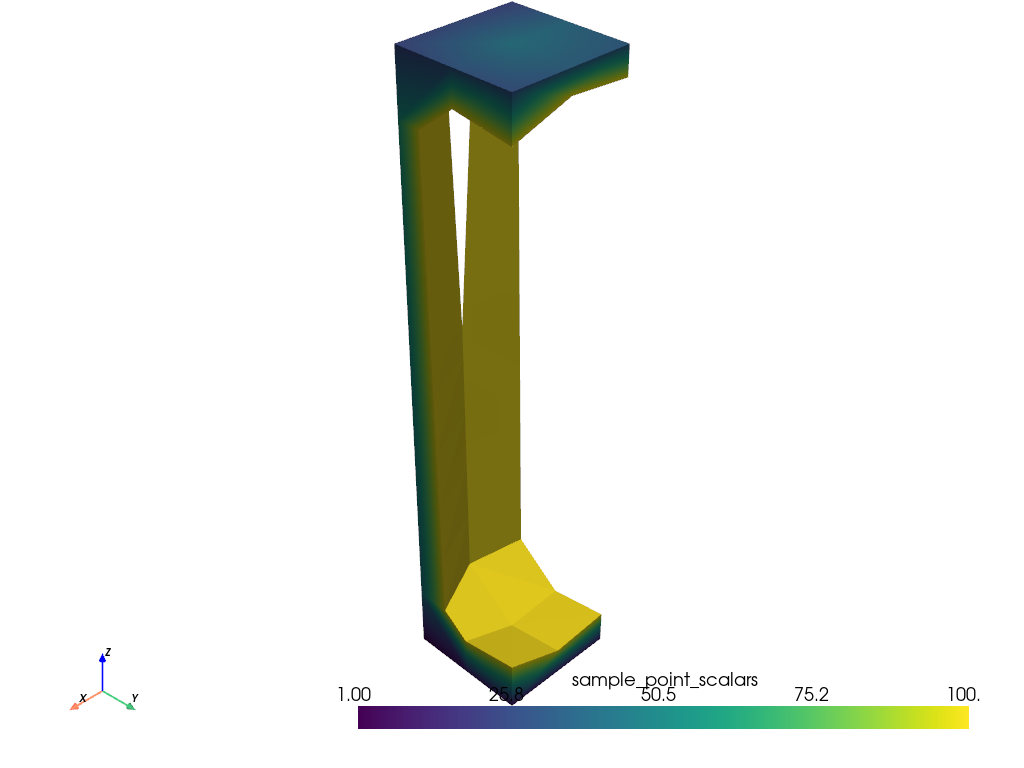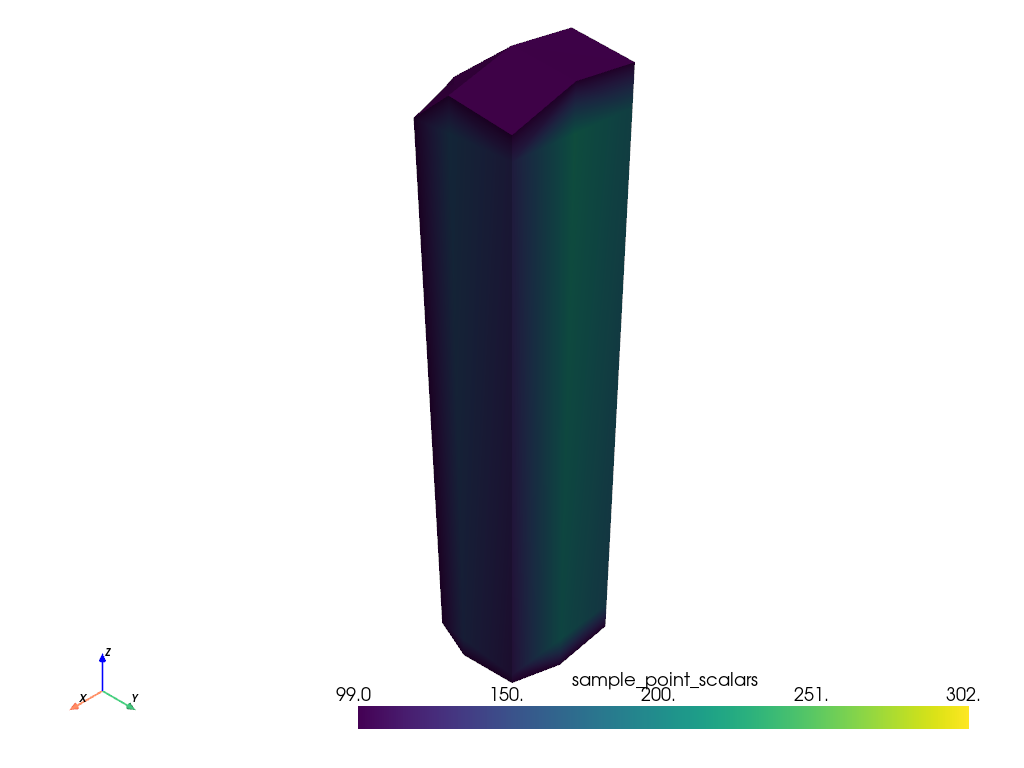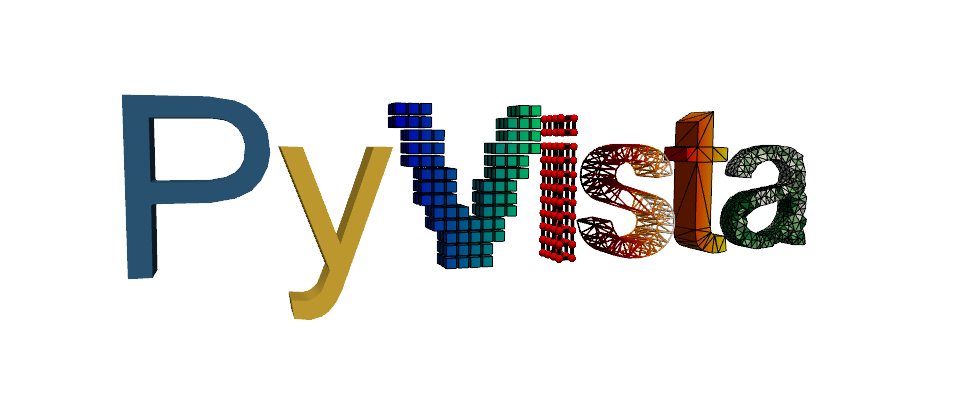pyvista.DataSetFilters.clip_scalar#
- DataSetFilters.clip_scalar(
- scalars=None,
- invert=True,
- value=0.0,
- inplace=False,
- progress_bar=False,
- both=False,
Clip a dataset by a scalar.
- Parameters:
- scalars
str,optional Name of scalars to clip on. Defaults to currently active scalars.
- invertbool, default:
True Flag on whether to flip/invert the clip. When
True, only the mesh belowvaluewill be kept. WhenFalse, only values abovevaluewill be kept.- value
float, default: 0.0 Set the clipping value.
- inplacebool, default:
False Update mesh in-place.
- progress_barbool, default:
False Display a progress bar to indicate progress.
- bothbool, default:
False If
True, also returns the complementary clipped mesh.
- scalars
- Returns:
pyvista.PolyDataortupleClipped dataset if
both=False. Ifboth=Truethen returns a tuple of both clipped datasets.
Examples
Remove the part of the mesh with “sample_point_scalars” above 100.
>>> import pyvista as pv >>> from pyvista import examples >>> dataset = examples.load_hexbeam() >>> clipped = dataset.clip_scalar( ... scalars="sample_point_scalars", value=100 ... ) >>> clipped.plot()

Get clipped meshes corresponding to the portions of the mesh above and below 100.
>>> import pyvista as pv >>> from pyvista import examples >>> dataset = examples.load_hexbeam() >>> _below, _above = dataset.clip_scalar( ... scalars="sample_point_scalars", value=100, both=True ... )
Remove the part of the mesh with “sample_point_scalars” below 100.
>>> import pyvista as pv >>> from pyvista import examples >>> dataset = examples.load_hexbeam() >>> clipped = dataset.clip_scalar( ... scalars="sample_point_scalars", value=100, invert=False ... ) >>> clipped.plot()

